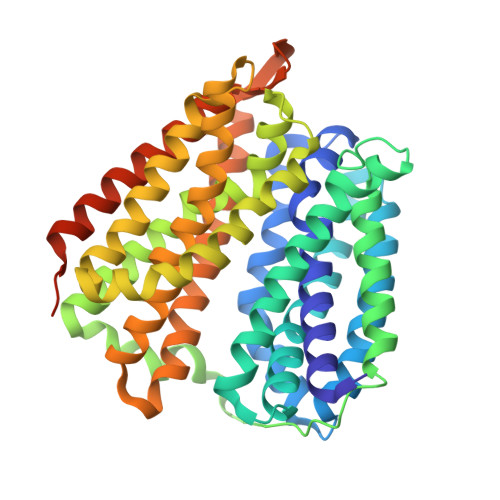Mechanistic insights into proton-coupled substrate translocation of nucleoside proton symporters.
Xiao, Q., Chen, X., Wang, C., He, Y., Deng, D., Sun, B.(2025) J Biological Chem 301: 108357-108357
- PubMed: 40015637
- DOI: https://doi.org/10.1016/j.jbc.2025.108357
- Primary Citation of Related Structures:
8ZOJ - PubMed Abstract:
The nucleoside proton symporter (NHS) family proteins are part of the major facilitator superfamily and are responsible for transporting nucleosides from the extracellular environment into the cell. Structural and biochemical analysis of NupG, a prototypical NHS member, have pinpointed the critical residues involved in substrate binding. However, the proton-coupled mechanism diving substrate translocation in NHS proteins has remained elusive. In previous research, we identified Asp323 in NupG as a potential protonation site. In this study, using X-ray crystallography, molecular dynamics simulations, and biochemical assays, we discovered that the deprotonation of Asp323 in NupG, or the equivalent Asp315 in YegT, (another NHS family member) triggers a local conformational change in the TM10 region of NHS transporters. Notably, this protonation site is part of a novel motif (GXXXD) located in the middle of the TM10 transmembrane helix in NHS proteins. Further biochemical studies suggest that this local conformational change in the GXXXD motif plays a role in coordinating substrate release, ultimately facilitating substrate translocation. Our findings provide valuable insights into the molecular mechanism of nucleoside transport and expand the understanding of the diverse transport mechanisms within the major facilitator superfamily.
- Shanghai Advanced Research Institute, Chinese Academy of Sciences, Shanghai, China.
Organizational Affiliation:

















